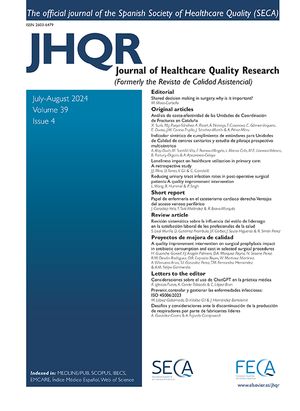El índice de sustitución (IS) es uno de los indicadores utilizados para monitorizar la calidad de los programas de cirugía mayor ambulatoria (CMA). El objetivo de nuestro trabajo es estudiar la evolución en los últimos años de dicho índice en nuestro servicio de cirugía.
MétodosEn el período 1995-2000 fueron intervenidos 5.675 pacientes por patologías incluidas en los programas de CMA. El 37,8% de los pacientes fueron intervenidos sin ingreso. Se analiza el IS anual para cada enfermedad.
ResultadosObservamos una evolución ascendente del IS para cada enfermedad, alcanzando en el año 2000 cifras del 93% para enfermedades como el sinus pilonidal.
ConclusiónEl IS como medida del impacto de la CMA en nuestro servicio ha presentado un incremento anual para la mayor parte de los procesos hasta equipararse con los estándares establecidos actualmente.
The substitution index (SI) is one of the indicators used to monitor the quality of outpatient surgery (OPS) programs. The aim of this study was to evaluate the evolution of this index in our department during the last few years.
MethodsFrom 1995-2000, 5675 patients underwent surgery for diagnoses included in the OPS program. Of these, 37.8% underwent ambulatory surgery. We analyzed the annual SI in each diagnostic group.
ResultsThe SI index increased for each diagnostic group. In 2000 values reached 93% for diagnostic groups such as pilonidal sinus.
ConclusionUsed as a measure of the impact of OPS in our department, the SI has increased annually in most surgical procedures and is similar to currently established standards.






